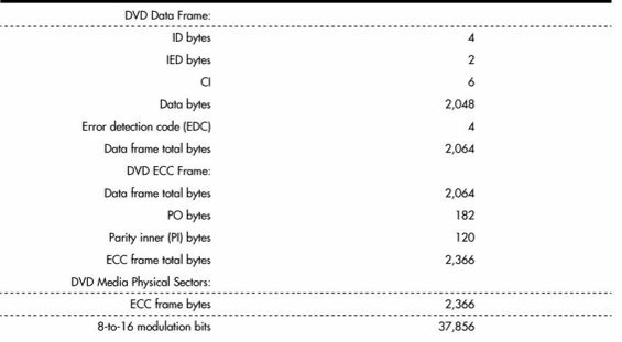Hardware Reference
In-Depth Information
676 sectors per second. Each sector contains 2,048 bytes of data.
When being written, the sectors are first formatted into data frames of 2,064 bytes: 2,048 are data, 4
bytes contain ID information, 2 bytes contain ID error-detection (IED) codes, 6 bytes contain
copyright information, and 4 bytes contain EDC for the frame.
The data frames then have ECC information added to convert them into ECC frames. Each ECC frame
contains the 2,064-byte data frame plus 182 parity outer (PO) bytes and 120 parity inner (PI) bytes,
for a total of 2,366 bytes for each ECC frame.
Finally, the ECC frames are converted into physical sectors on the disc. This is done by taking 91
bytes at a time from the ECC frame and converting them into recorded bits via 8-to-16 modulation.
This is where each byte (8 bits) is converted into a special 16-bit value, which is selected from a
table. These values are designed using an RLL 2,10 scheme, which is designed so that the encoded
information never has a run of fewer than two or more than ten 0 bits in a row. After each group of 91
bytes is converted via the 8-to-16 modulation, 32 bits (4 bytes) of synchronization information are
added. After the entire ECC frame is converted into a physical sector, 4,836 total bytes are stored.
Table 11.9
shows the sector, frame, and audio data calculations.
Table 11.9. DVD Data Frame, ECC Frame, and Physical Sector Layout and Information
Unlike CDs, DVDs do not use subcodes. Instead, they use the ID bytes in each data frame to store the
sector number and information about the sectors.



